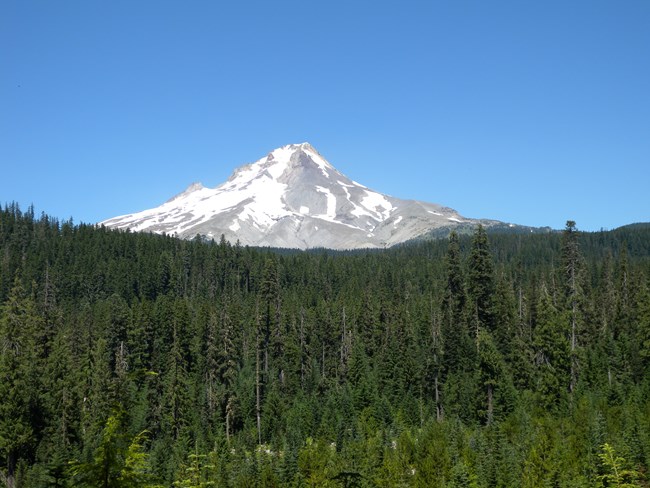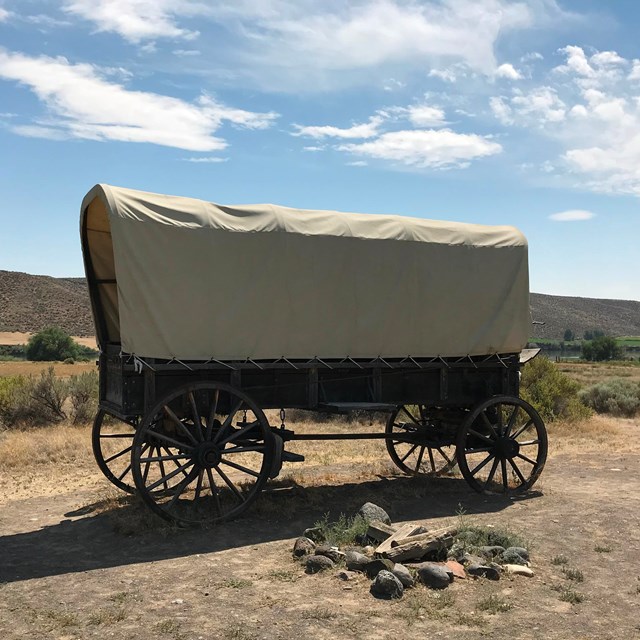Last updated: February 7, 2024
Article
African Americans on the Oregon Trail

NPS Photo
African Americans were among the pioneers who crossed the trail to Oregon, some coming willingly as free men and women but others forced to travel as the property of slaveholders. Those who reached Oregon between the 1840s and 1860s probably numbered in the hundreds.
Oregon was hostile toward them. White settlers did not want any Black people among them, whether free or enslaved. In 1843, before Oregon became an American territory, recently arrived overlanders formed an extralegal “provisional” government that quickly moved to ban slavery and also barred the entry of Black persons to the Oregon Country.
This law also required slaveholders to free any enslaved people they had brought to Oregon, and it banished the recently freed individuals—who lacked the means to leave—from the country. Any Black people who remained in Oregon would be publicly whipped, receiving 39 lashes every six months until they left the country. Oregonians soon amended the harsh “lash law” to impose forced labor, another form of slavery, instead of whipping.
Oregon’s lash law, although never enforced, did impact at least one African American emigrant family.
George Bush, the freeborn son of a black father and an Irish mother, headed to the Oregon Country in 1844 with his white wife and their five sons, hoping to escape the hostility they faced in Missouri. They joined a wagon party with four white families, neighbors who respected Bush as a friend and an equal. A prosperous farmer and a kind man, George Bush provided wagons and supplies to the needy families of the party and bought more food for them along the trail. But as their wagons neared The Dalles, a mission settlement on the Columbia River, word of Oregon’s recently enacted lash law reached the emigrants. Bush and others of the wagon party decided to head into Hudson’s Bay Company-controlled territory north of the Columbia River, out of reach of the Americans’ exclusion laws. They overwintered near Hudson’s Bay Company’s Fort Vancouver, in present-day Washington State.
The following spring, the group moved north and settled in the Puget Sound area of today’s Washington. There the Bush family built a flourishing farm and became friends with their Nisqually Indian neighbors. However, when the United States and Great Britain formally divided the Oregon Country in 1846, the US took over the Puget Sound region and Bush found himself again subject to unfriendly Oregon laws.
A few years later, Congress passed the Donation Land Act of 1850, which allowed “every white settler” and “American half breed Indians” to legally claim land in Oregon. Bush now stood to lose his productive farm to any settler dishonorable enough to claim it. His friends and neighbors fought through legal channels to prevent that from happening, and as a result Congress passed a special act in 1855 to validate George Bush’s land claim. By 1860 the Bush family was operating a modern, mechanized farm of 880 acres. The area they farmed near Tumwater, Washington, is still known as Bush Prairie.
Other African Americans were less fortunate. In 1849 Oregon passed another Black exclusion law making it “unlawful for any negro or mulatto to enter into, or reside” in Oregon, with exceptions for those already present. At least one man is known to have been expelled from the territory under that law. Ten years later Oregon entered statehood with a new constitution that prohibited further Black in-migration and barred Black people from owning property, entering into contracts, or participating in legal matters. (Activists among the Black and white communities were able to get that clause was repealed in 1926.)
Rubbing salt in the wound, the Homestead Act of 1862 opened public lands across the West to men and women of any race, so long as they were American citizens. But free people of African descent were denied US citizenship until passage of the 14th Amendment to the Constitution in 1868. Then, at last, Black people could expect to take their place among other homesteaders in the West.
To learn more about the Black pioneer experience in Oregon:


